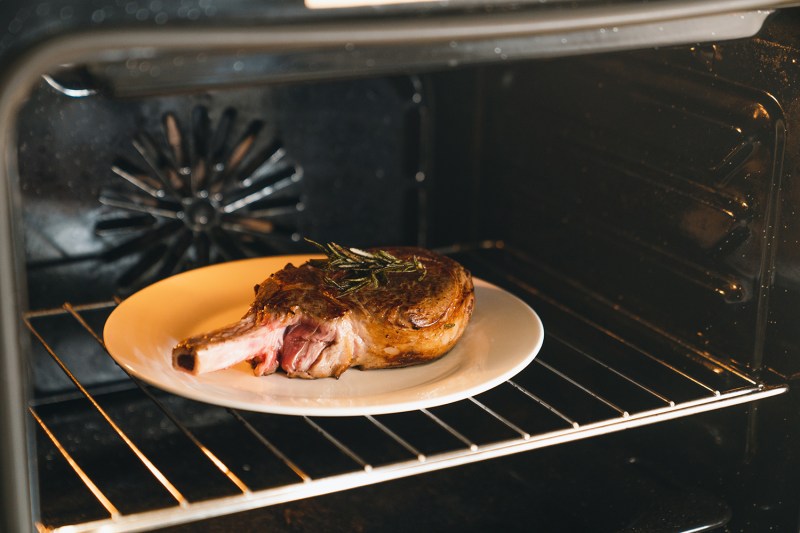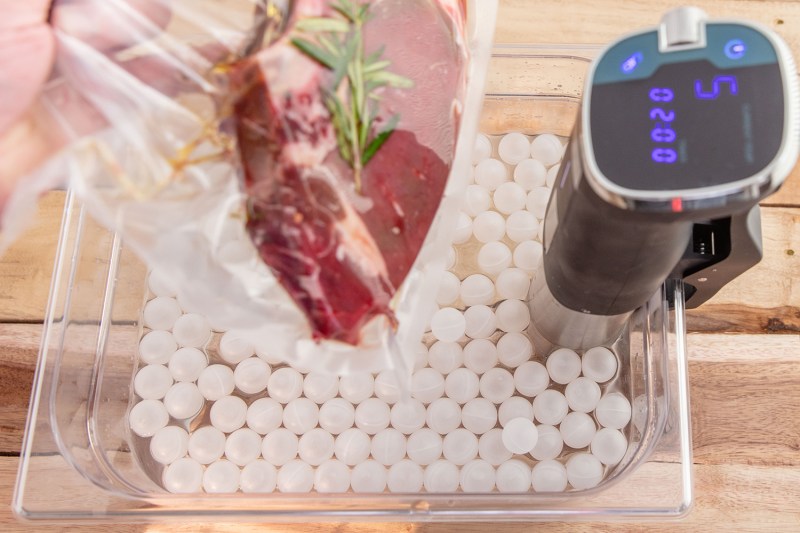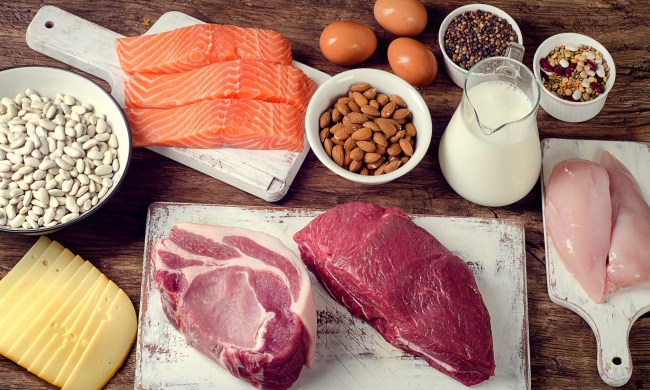
Say you’ve perfectly cooked a 12-ounce steak and gotten that beautiful golden sear outside. You look forward to a night of feasting only to realize there is too much steak left on the platter after the meal. You then pack the leftover steak in a container, store it in the fridge, and hope it’s still as perfect as it was.
Steak — whether it’s filet mignon, hanger, rib-eye, or sirloin — is an expensive food item and it seems wasteful to just throw any leftovers. What do you do then? Reheat it the next day in the hopes it doesn’t dry out and still tastes as good as the night before.
When reheating steak, the first thing that comes to mind is using a microwave. Nowadays, we live in a world that suggests to us that food preparation has to be easy and fast. Not with steak, though, as we have to go through a two-step cooking process in order to achieve a perfect leftover steak. Keep reading, and we’ll tell you how to reheat steak and some more helpful tips about cooking it.
Don’t use a microwave
Alan Ashkinaze, an award-winning executive chef of the iconic Gallagher Steakhouse in New York, explained that the microwave is not recommended because, typically, food is cooked from the inside out. And with this, the steak will come out sinewy. “You don’t want to cook it fast at a high temperature,” Ashkinaze said. “Indirect heat is the way to go, and this way, you’re getting the most flavors.”
The two-step process

Instead of searing steak in a pan and reheating it in the oven, Ashkinaze reverses these two cooking processes. He suggests putting it in the oven first and then searing it with butter or olive oil over medium-high heat.
The process is as follows: First, remove the steak from the fridge and leave it at room temperature, then preheat the oven to 250 degrees Fahrenheit for 15 minutes. Once the steak is ready, put it on a sturdy wire rack with a baking tray underneath it. This way, with adequate airflow, you’re not just reheating the top of the steak; you’re reheating the steak from the inside out.
Using a meat thermometer, once the steak temperature is at 110 degrees Fahrenheit, take it out of the oven. Next, over medium-high heat, add one tablespoon of salted butter and sear the steak for 1 minute to 1.5 minutes on both sides. Make sure to baste it on both sides to seal in those juices. If you don’t, the steak that you had last night, which was probably fantastic, is going to become dry.
Ashkinaze told us that the size of a steak doesn’t matter, but its thickness does. A 1-inch steak and a 3-inch steak will have different reheating times. Ashkinaze suggested cooking a 1-inch steak for between 10 and 12 minutes at 250 degrees Fahrenheit, while a 3-inch steak should be cooked for 25 minutes.
First things first – Cooking your steak

If you want to grill leftover steaks in your backyard, it’s OK to use an outdoor grill. Ashkinze shared his expertise on how to achieve a tender, juicy steak there as well.
Outdoor grill
If you’re reheating a half-inch steak on a gas or charcoal grill, remove it first from the refrigerator and keep the steak at room temperature. Light the grill and bring the temperature to 400 degrees Fahrenheit. Sear the steak on medium-high heat for 1 minute on each side, then move it off the flame so there’s no direct heat hitting your steak. Close cover for approximately 4 to 5 minutes.
Always sear the steak on medium-high heat and then cook low and slow using indirect heat. Since the steak is already previously cooked, you may want to use a thermometer to ensure that you cook your steak to your desired temperature. If you want your steak to be rare, the temperature should range from 122 to 125 degrees Fahrenheit, while for medium-rare it’s about 130 degrees Fahrenheit.
Stovetop grill
Another way to reheat your steak is to use a cast-iron stovetop grill pan. These pans are circular or rectangular and have grill marks on them. If you have a half-inch steak with you, here’s how you reheat it.
First, remove the steak from the refrigerator and keep it at room temperature. Preheat the oven to 300 degrees Fahrenheit and turn on the ventilation fan. Using a cast-iron pan, set the burner temperature to medium-high. Wait for 5 minutes, then add one tablespoon of vegetable oil. Sear the steak on each side for 1 minute, add 1 tablespoon of butter, garlic, and thyme (optional), and place a cast-iron pan in the center of the oven for 5 minutes. Remove steak from oven and flip again.
For smaller cuts of steak, 1 teaspoon of butter is enough. If it’s a big chunk of steak, 1 tablespoon of butter is recommended. Note again that the thickness of the steak will depend on the length of time in the oven. Use a thermometer to cook your steaks to the desired temperature.
Extra tips

- Sous vide cooking is another method to reheat steak. Sous vide refers to vacuum-sealing food in a bag and heating it in a water bath at 120 degrees Fahrenheit. Make sure to use an airtight bag, because if you don’t, you may be in jeopardy of having the water running in. You may choose Cryovac for this. Once warmed through, take it out and sear both sides for 1 minute.
- If the leftover steak was a bit bland the night before, you can season it again or add another spice to it.
- Whatever method you choose, make sure to keep an eye on the steak to avoid burning it.
What’s the best way to store cooked steak in the refrigerator?
This is an important step before you get to reheating your steak the next day. Here’s the best way to store cooked steak in the refrigerator.
- Cool it down quickly: Don’t leave cooked steak at room temperature for extended periods. This allows bacteria to grow more rapidly. Let the steak cool completely, ideally to room temperature, but at least until it’s no longer warm to the touch.
- Wrap it tightly: Air exposure dries out steak and can accelerate spoilage. Wrap the steak tightly in plastic wrap or aluminum foil. Alternatively, you can use a reusable silicone storage container with a lid to create an airtight seal.
- Store it on a lower shelf: Place the wrapped steak on a lower shelf in the refrigerator. This keeps it colder and prevents drippings from contaminating other foods.
- Label it and eat it within three to four days: For safety, label the container with the date the steak was cooked. Consume the leftover steak no later than four days after it was originally cooked for the best quality and taste.



